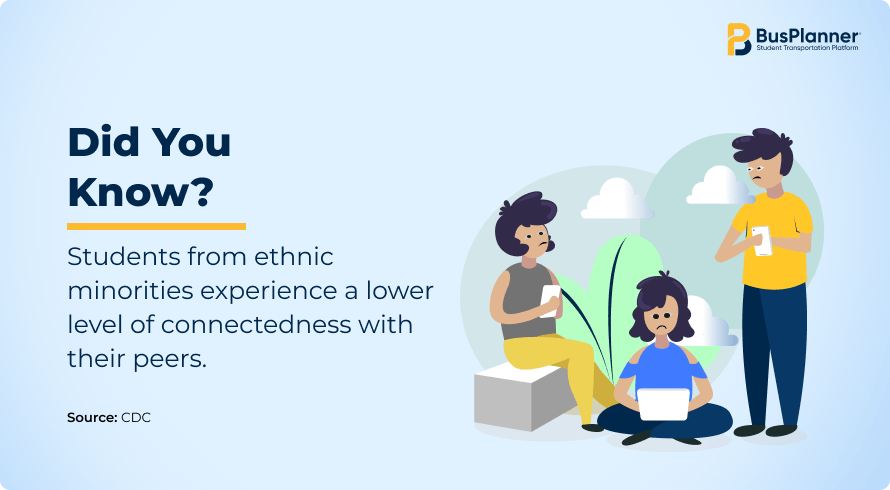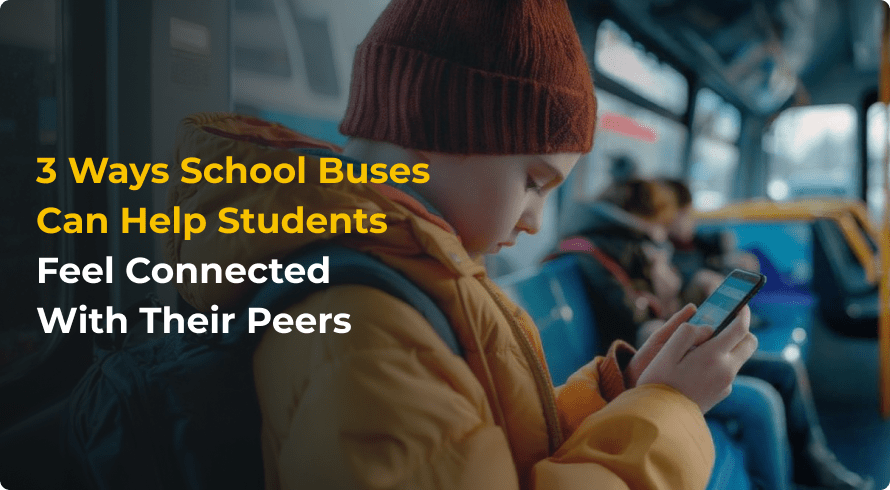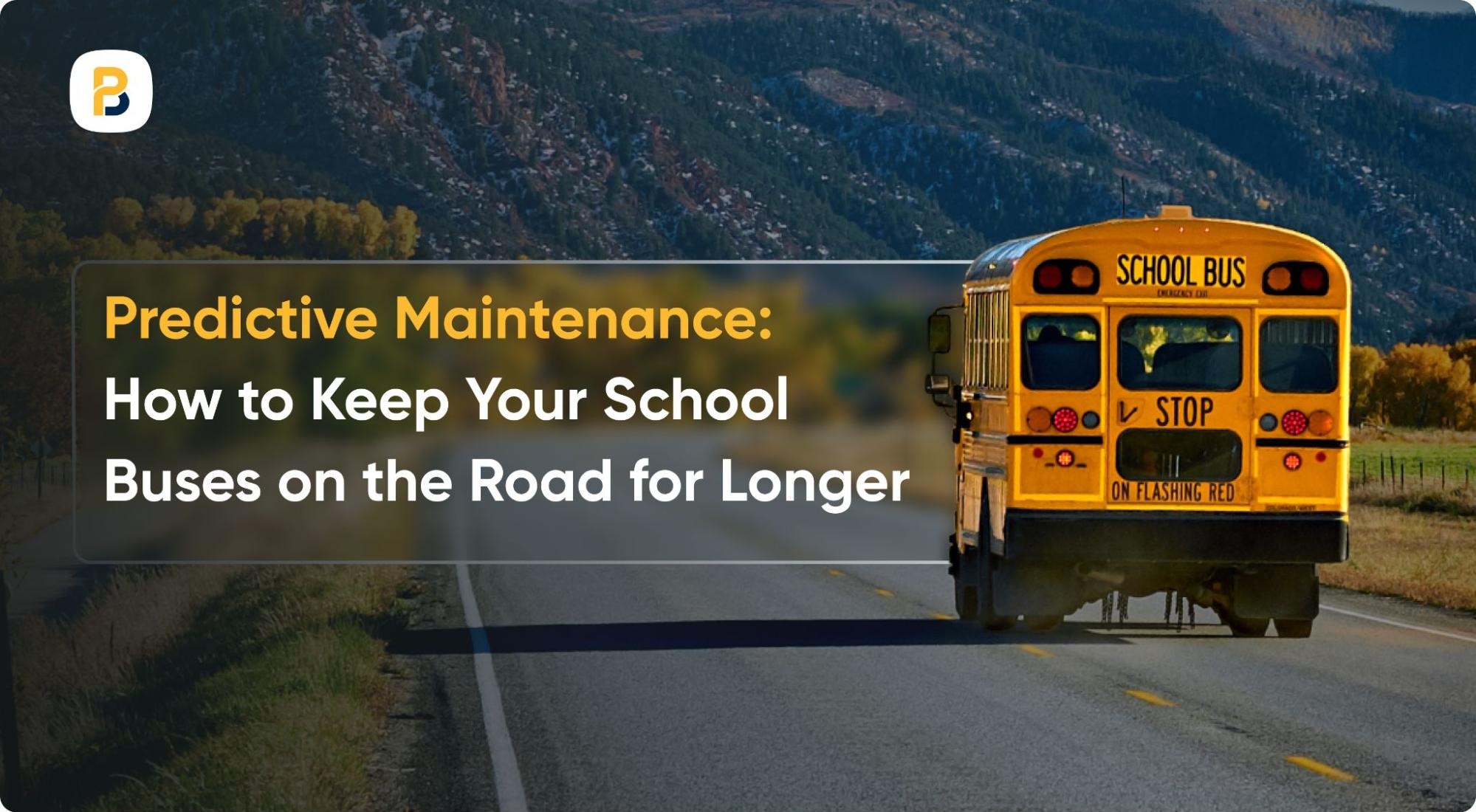The daily commute on yellow buses is the first and last social touchpoint for millions of students every day. Approximately 26 million elementary and secondary school students ride about 480,000 yellow buses daily in the United States alone.
Why is this important? Well, the ride serves as a great bonding experience for many of the students who either make new friends on school buses or get time to unwind together. In this article, we’ll look at four ways school buses can help students feel more connected with their peers.
1. Community Building
Students in New Orleans spend about 47 minutes a day on a school bus during their commute. With a ready-made mix of interests, cultures, and grades, the school bus can become the perfect melting pot where children can share their experiences and dreams.
Transportation teams can use this opportunity to make the school bus a welcome environment for students:
- Seat Rotation: By not having designated seats, students can interact with more of their peers, or “buddy” programs to pair riders of different ages. Executing this is relatively simple with seating maps that are available in a comprehensive student transportation platform.
- Themed Rides: Keeping separate days to discuss various topics like sports, movies, events, and music within the bus. Having “themed” rides can allow students to connect with others!.
- Shared Interests: Pairing children in similar school clubs together so they can discuss their hobbies and build relationships. These can be combined with seat rotation to allow students within a certain club to talk to others.
2. Sense of Belonging

62% of students said they felt close to people in their school in 2021. That figure saw a significant drop to 55% in 2023, according to the Youth Risk Behavior Survey.
Districts can create a sense of belonging by increasing “bonding time.” Trained drivers to identify individuals who seem excluded or out of place. A trained driver can also control bullying to keep students safe during the ride.
If students feel connected with others on the bus, they’re more likely to want to take it, which increases ridership for districts and saves parents time that they would spend picking and dropping their kids. It’s a win for all!
3. Safety & Well-Being Go A Long Way
The National Highway Traffic Safety Administration (NHTSA) reports that children are 70 times more likely to get to school safely in a school bus than in a car. Safety goes a long way in keeping mental health in check and ensuring students do not stress about matters beyond their control.
Districts can take an extra step to ensure student safety and well-being so that they can focus on connecting with their peers on the school bus.
- Prevent Bullying: The presence of bus monitors or supervisors on school buses ensures student safety and prevents bullying on school buses.
- Reduce Parent Anxiety: Integrating a parent app for student transportation provides parents with real-time data on school buses, their location, and two-way messaging, which gives them greater peace of mind.
Conclusion
Increasing social interactions between students on the school bus should be one of the top priorities of districts. Time spent on yellow buses, when added up, makes up a significant part of a student’s school year.
By increasing social interactions between students on the school bus, transportation teams can turn the weekday commute into something special for kids. Get in touch with us to see how BusPlanner’s all-in-one student transportation platform can help you improve communication with stakeholders.







